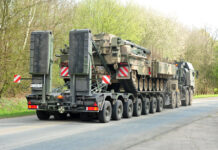The ‘loi de programmation militaire’ (LPM) is a French institution. This document is discussed at length and represents the Government’s commitment to providing the military with sufficient resources for the future. LPM 24–30 will allow the French military to significantly increase its budget, reaching EUR 413.3 billion over the next seven years. Despite this considerable funding, several programmes will experience staggered delivery or a reduction in scope.
According to the Ministry of Armed Forces, in the context of technological breakthroughs, rearmament, and explicit contention of international legal principles, the 2024–2030 LPM aims to build a revitalised Armed Forces model. It also represents a political and military transformation project in the service of French sovereignty, seeking to protect its strategic autonomy.
Parliamentary control will be strengthened
The LPM arrived before the Assemblée Nationale on 22 May 2023 for the initial text to be amended by members of parliament (MPs). A total of 1,700 amendments were tabled before a vote was scheduled for 6 June. The Senate then scrutinised 288 amendments and after weeks of debate, the French Parliament adopted the 2024–2030 LPM on 13 July. The text provides EUR 413.3 billion for defence and a slight increase in personnel. The LPM was promulgated on 1 August 2023 and published in the ‘Journal Officiel’ the following day.
The allocated amount is 40% higher than the previous 2019–2025 LPM at EUR 295 billion. With this act, parliamentary control is reinforced because both assemblies have determined that the objectives must be updated by the end of 2027, and the Government must provide annual progress updates. The 2027 revision must be preceded by a Revue Nationale Stratégique (RNS) and will lead to adopting a law and not a debate followed by a vote, as happened in 2021.

Credit: Jean François Auran
A significant budgetary effort
The LPM sets the annual budget amount for the next seven years. It is, therefore, a financial commitment that the Government makes towards citizens. The text provides an increase of EUR 3.1 billion in 2024, an additional EUR 3 billion annually from 2025 to 2027, and finally EUR 4.3 billion annually from 2028. The budget will, therefore, reach a total of EUR 68.9 billion in 2030. The defence budget will therefore be increased to 2% of GDP between 2025 and 2027. According to the previous LPM, the defence budget was due to reach this symbolic figure in 2025. The military programming does not include the budgets dedicated to military support for Ukraine or the financing of the service national universel (SNU), which receives other funding. The LPM will make it possible to reach the figure of 275,000 personnel within the Ministry of the Armed Forces and 80,000 reservists by 2030. The text also acknowledges the end of large-scale operations in Africa and the ongoing reflections on Operation Sentinel’s continuation. The budget dedicated to the OPEX/MISSINT will plummet from EUR 1.2 billion to EUR 750 million annually.
Strengthening the coherence of military forces
The LPM specifies the priorities from 2024 to 2030 and intends to remedy weaknesses highlighted by the conflict in Ukraine. The Ministry of the Armed Forces insists that the LPM is consistent between all components of military capabilities. For this coherence, manufacturers will spread out deliveries regarding several significant programmes for the benefit of ammunition, stocks of spare parts for better maintenance, operational preparation, or the launch of innovative programmes whose needs have arisen from the Ukrainian conflict and other geopolitical tensions. Equipment such as aircraft, armoured vehicles or ships represent EUR 268 billion, and EUR 10 billion will be injected into technological innovation to support all these new developments.
Constant effort on nuclear power
Nuclear deterrence alone will consume 13% of the funds since it is a question of modernising both the carrier platforms and missiles. It will consist of constructing a new class of nuclear SSBNs (nuclear powered ballistic missile submarines), called SNLE 3G, for the third generation to replace, from 2035, the Triomphant class currently in service. The M51.3 missile should be delivered in 2025 and is due to equip future submersibles. This missile will have an increased range of some hundreds of kilometres. It incorporates the characteristics of the M51.2 with an improved third stage, aiming to increase the maximum range and guarantee the penetration of opposing anti-missile defences circa 2030. France conducted the first M51.3 missile test on 18 November 2023 from a land test site. During this period, the airborne component of the French nuclear deterrent, which relies on the Strategic Air Forces (FAS) and the Nuclear Naval Air Force (FANu), should be equipped with modernised ASMPA-R airborne nuclear missiles, while the ASMPA-R’s successor, the fourth-generation ASN4G missile is due to be test launched.
Strengthening permanent protective postures
The LPM will make it possible to consolidate all permanent protection postures. The permanent air security posture (posture Permanente de sûreté-air) will be extended to the fight against drones and very high altitude threats. Maritime safeguarding and even the contribution of the armed forces to specific public service missions (safeguarding, helping populations, supporting other administrations) will be reinforced. The text will also strengthen the permanent posture dedicated to influence, established as a strategic function, and information warfare. Overseas territories will be one of the priorities, and the forces de souveraineté will benefit from a general effort to improve capabilities (protection, intervention and support, infrastructure). They will constitute a first reinforced level immediately available in terms of presence, protection, and humanitarian action, to discourage any attempt at destabilisation or attack. The reinforcement will result in permanently basing A400M aircraft, with more than EUR 800 million to be spent on the military infrastructure of overseas territories; approximately 65 Serval armoured personnel carriers and six medium helicopters will be supplied as part of a capacity improvement effort for the forces stationed in these areas.
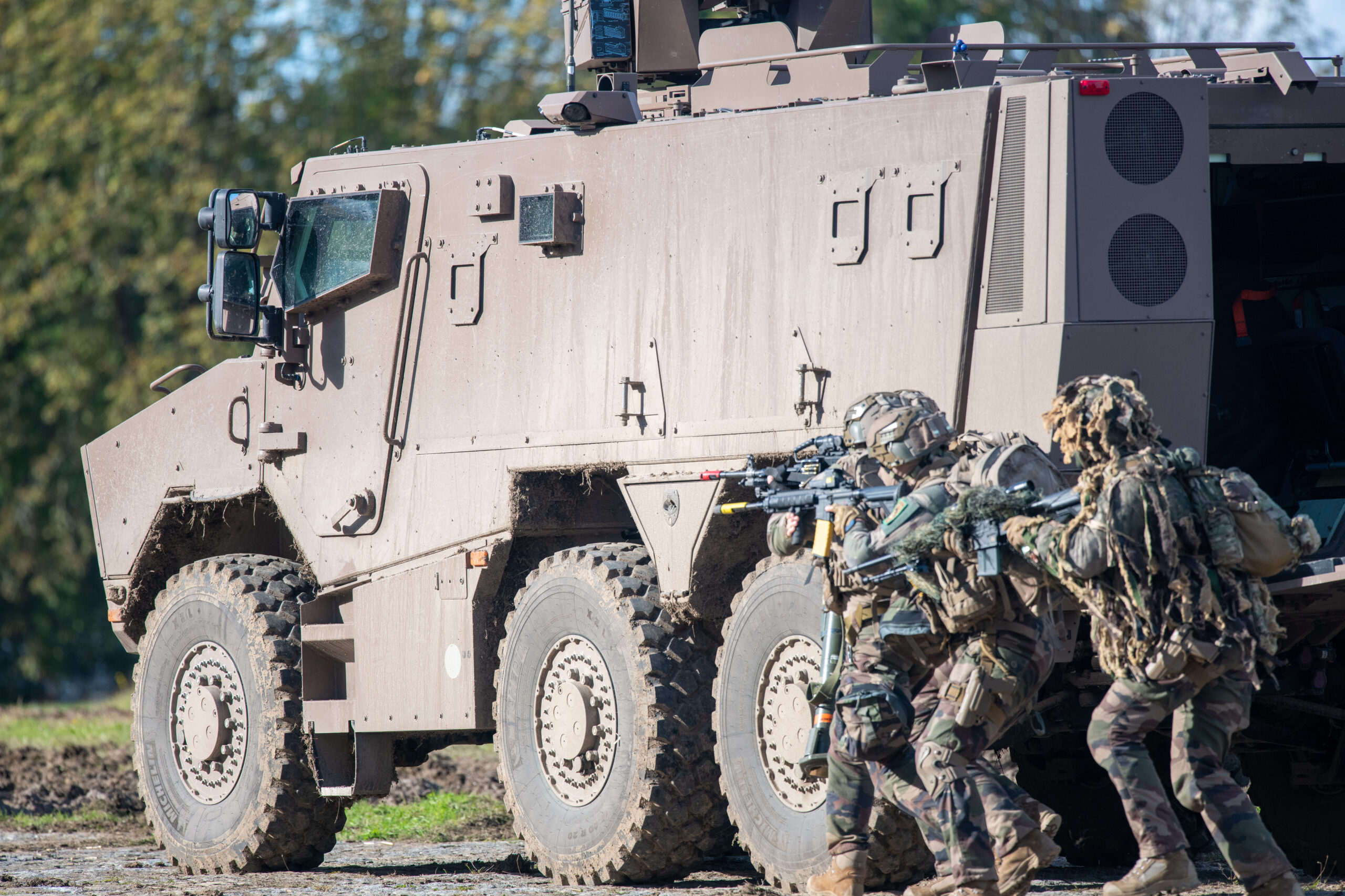
Credit: Jean François Auran
Better-trained conventional assets
The Army will receive 2,300 new armoured vehicles over the period in question, which is 30% less than planned. Out of the 300 expected, 100 Jaguar reconnaissance and combat vehicles (EBRC) will be delivered after 2030. The Army will be losing infantry soldiers, but the positions will be transferred to emerging functions such as cyber combatants or drone operators.
Rocket artillery will receive special attention, with the reconstitution of the Lance Roquette Unitaire (LRU) fleet. The LPM project plans to acquire at least 13 new systems before 2030 and 13 more by 2035. The solution chosen could be French or European, benefitting from Safran, Ariane Group and MBDA’s expertise. The Army, beyond the equipment, is seeking to preserve its adaptability and manoeuvre capability.
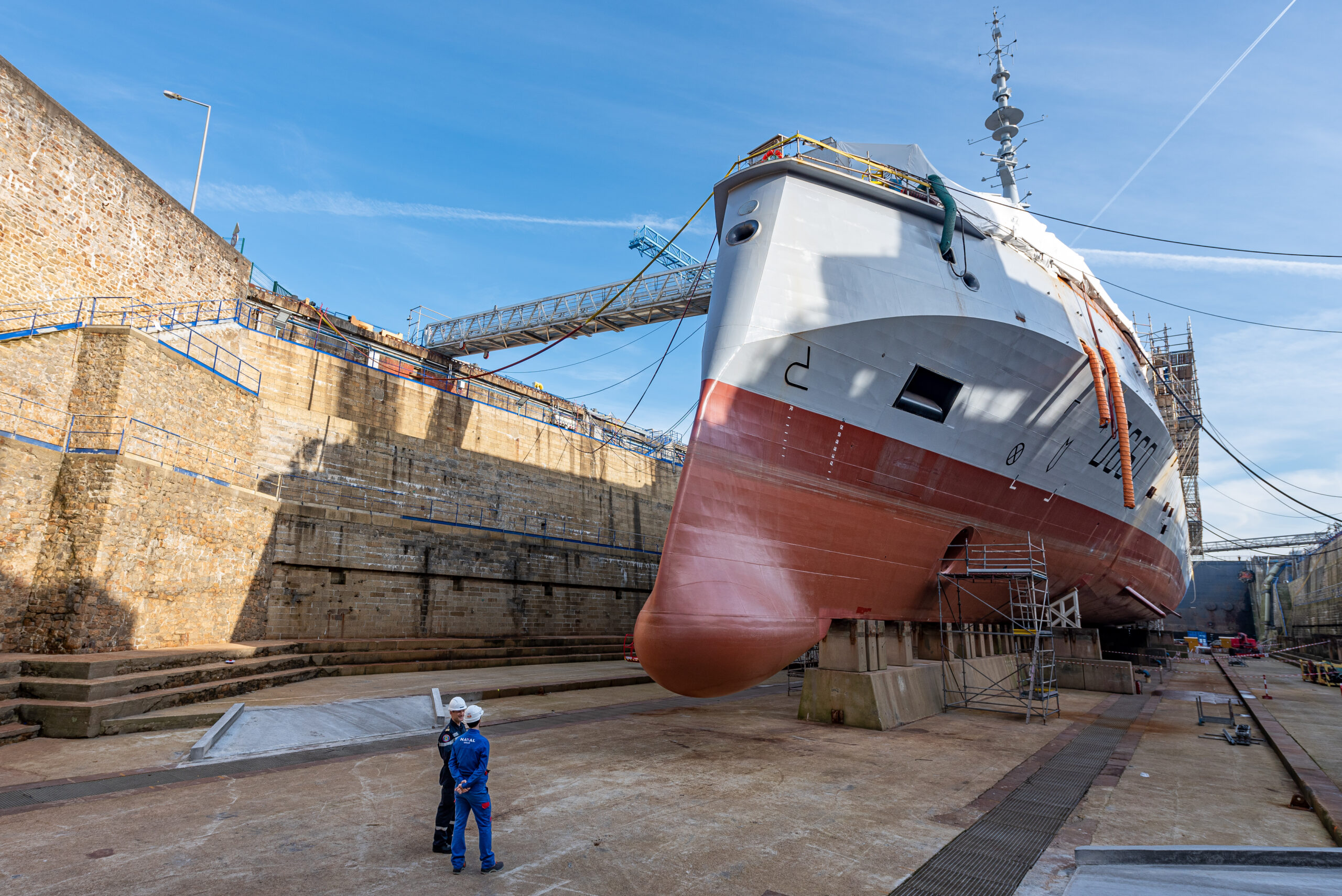
Credit: Marine Nationale/Maxime Audin
According to observers, the Marine Nationale (French Navy, also known as ‘La Royale’) seems to be the winner of this LPM. During his parliamentary hearing, the Navy Chief of Staff (CEMM) did not hesitate to enumerate the lengthy list of future challenges such as the rise of piracy, the plundering of fishing resources and the spectacular development of the navies of other countries, including Turkey and China. He explained that the picture was gloomy, and that the Navy’s current resources must be improved.
The fleet will, therefore, be modernised by 2030 but not to the extent expected. The main disappointment comes from the reduced number of Frégates de défense et d’intervention (FDI) due to be delivered. The three vessels will be the Admiral Ronarc’h, due to enter service in 2024, the Admiral Louzeau in 2026, and the Castex in 2030. The FDI delivery schedule is deliberately spread out to allow construction of units for export. Three force supply vessels (BRF), part of the Vulcano class logistics support ship programme, will replace the Durance class tanker. One ship will enter service in 2024, and two others in 2025 and 2027. La Royale will have seven offshore patrollers (PH), replacing the old A69 Aviso vessels. At the end of November 2023, the Directorate General of Armaments ordered seven offshore patrol vessels (OPVs) for EUR 900 million. These OPVs should have a displacement of 2,000 tonnes, be 90 m in length, and be fitted with at least one 40 mm RapidFire cannon in addition to having the capacity to deploy a helicopter and/or an onboard UAV. Ten vessels are expected to be in service by 2035, with a first delivery planned for 2026.
The Barracuda nuclear attack submarine class also continues to be included in this programming law. Five other submarines will enter service by 2030, as the Suffren is already operational. Included in the 2024–2030 LPM, the construction of the new aircraft carrier is now secured after it took 20 years to reach a decision. The porte-avions de nouvelle generation (PANg) aircraft carriers are scheduled to be ordered during fiscal year 2025. Studies for constructing a second aircraft carrier will be launched, with a decision expected in 2028.
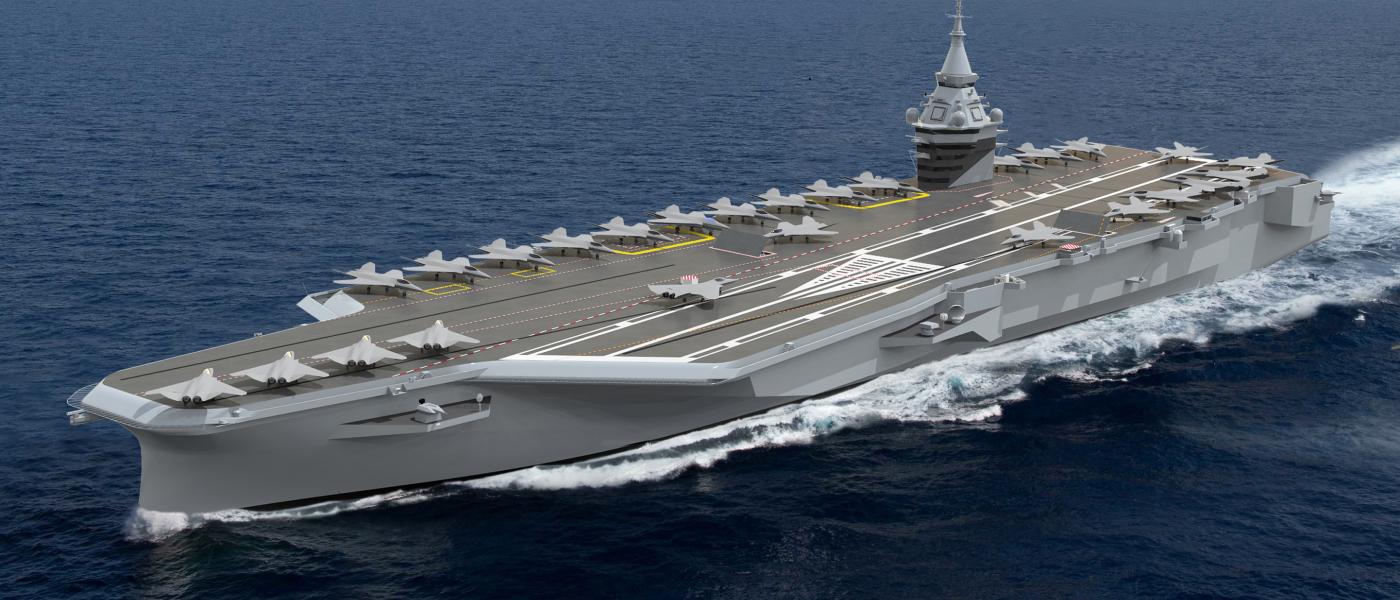
Credit: Naval Group
The Air and Space Force (AAE) will continue homogenising its entire aviation capability around the Rafale fighter and strengthen its strategic transport fleet. In 2030, the Air Force will have 137 Rafale aircraft and 35 A400M transport aircraft, compared to the initial target of 185 Rafales and 50 A400Ms. Finally, by 2030, AAE will receive its first Eurodrone system out of six systems to be acquired so far. France’s action in space will be reinforced with spatial observation, signals intelligence (SIGINT) satellites, and increased exo-atmospheric monitoring capabilities. The objective is to detect a suspicious or aggressive act in space and to protect critical assets through active defence, particularly in low orbit. Special Operations Command, whose role is essential in the event of a hybrid conflict, will be allocated EUR 2 billion over the planned period. The funds will modernise their tactical transport aircraft, and the force will receive Caïman SOF helicopters, more durable drones, and submarine insertion assets.
In summary, these forces will not be more numerous, but they should be better-trained. Operational preparation will be qualitatively strengthened to consolidate necessary skills for short-term and future engagements. The ORION 2023 exercise was one of the first milestones in creating a simulated hybrid theatre which saw a blend of pure simulation with a combined battle group command post and a brigade, taking place in Mailly-le-Camp and, simultaneously, a LIVEX for a division. The Chief of the Defence Staff has planned another exercise of this magnitude for 2026.

Credit: Jean François Auran
More than EUR 16 billion is to be provided by the LPM to purchase ammunition of various kinds, whether it be MICA, Aster 15, and Aster 30 surface-to-air missiles, or artillery weapons such as 155 mm shells or long-range rockets. The country’s manufacturers have been asked to increase their output; KNDS is currently able to produce six Caesar howitzers monthly, with shell production reaching 1,500 units per month. While it might not seem like much, there has been an uptick.
Involving the civilian sector
The Government hopes to mobilise all of the country’s active forces, including the defence industry, with President Macron calling for a switch to a war economy. State orders are increasing and the sector is suffering from difficulties in financing. The Government has therefore decided to use one of the most popular savings accounts, the Livret A, for the financing needs of small- and medium-sized companies in the sector. France can also rely on its ability to develop new capabilities in cyber defence, mainly while covering disruptive technologies. According to the LPM, the Direction Générale de la Sécurité Extérieure (DGSE) must be the technological vehicle for the entire intelligence community. The intelligence organisation must be competent everywhere: in analysis, large, shared programs, foreign languages, cyber, etc. A centre of excellence will also be established to structure, around the École Polytechnique, content, methods, and academic teams to benefit the cyber missions entrusted to the Ministry of the Armed Forces.
A mixed reception
Defence specialists have welcomed the LPM albeit with a certain reluctance. The Government’s initial text was amended, particularly in the Senate, where right-wing parties hold the majority. While significant work has been done to make the text more coherent, securing resources was a vital issue. Indeed, if budgetary appropriations finance EUR 400 billion, EUR 13.3 billion will be financed by extra-budgetary resources whose origin was not 100% assured. In the event of insufficient funding, additional credits will have to be allocated in the finance law. The LPM’s detractors believe that a large part of the allocated resources will be used to pay for orders or parts of some orders from previous years. Therefore, the actual room for manoeuvre is less than EUR 100 billion.
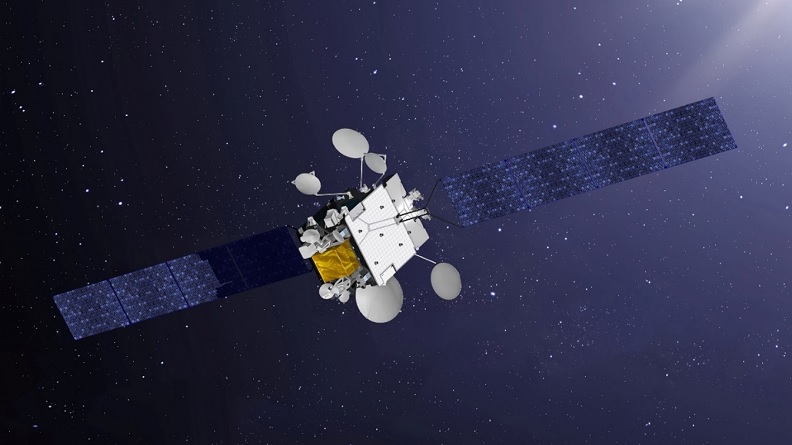
Credit: MINARM
It is clear that the country is making significant financial efforts to ensure the population’s security and safeguard its land, sea, and air domains. There is no point in buying hundreds of cannons if no technological superiority guarantees mastery of new conflict areas: space, the seabed, the informational field, cyber, etc. France, the world’s second-largest exclusive economic zone requires a more capable naval force as neighbouring Pacific nations build up their fleets. Therefore, the Navy came away a relative winner in the budget decision. Nevertheless, the law may still be impacted by the 2027 presidential and parliamentary elections, where the new president, as well as the new majority, could well question the choices made.
Jean François Auran




![Transport aircraft trends: A market overview The Xi’an Aircraft Industrial Corporation (XAC) Y-20 entered service with the Chinese military in 2016; the aircraft can be considered the Chinese equivalent of the Boeing C-17. A tanker variant is available, while the Y-20 also provides the basis for the new KJ-3000 AEW&C platform. [Cute Orca Weibo Account]](https://euro-sd.com/wp-content/uploads/2025/06/Y-20-China-Kopie-218x150.jpg)

![Europe’s airlift rejuvenation: is it enough? An Airbus A400M in French service, pictured on 25 June 2024. As things stand there will ultimately be 170 A400Ms in service with European air forces. [Armée de l'Air et de l'Espace]](https://euro-sd.com/wp-content/uploads/2025/06/French-A400M-Armee-de-lAir-et-de-lEspace-Kopie-218x150.jpg)
